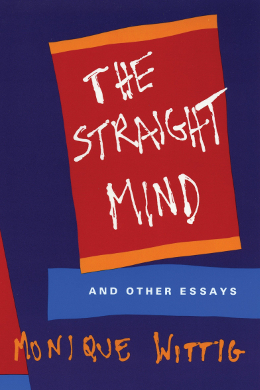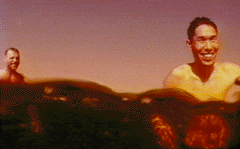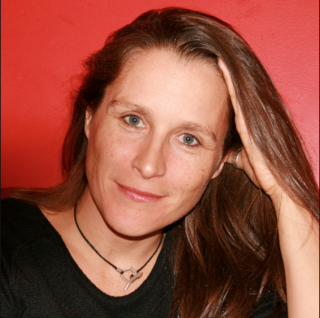Related Research Articles

AIDS Coalition to Unleash Power is an international, grassroots political group working to end the AIDS pandemic. The group works to improve the lives of people with AIDS through direct action, medical research, treatment and advocacy, and working to change legislation and public policies.

The GMHC is a New York City–based non-profit, volunteer-supported and community-based AIDS service organization whose mission statement is to "end the AIDS epidemic and uplift the lives of all affected." Founded in 1982, it is often billed as the "world's oldest AIDS service organization," as well as the "nation's oldest HIV/AIDS service organization."

Laurence David Kramer was an American playwright, author, film producer, public health advocate, and gay rights activist. He began his career rewriting scripts while working for Columbia Pictures, which led him to London, where he worked with United Artists. There he wrote the screenplay for the film Women in Love (1969) and received an Academy Award nomination for his work.

The Straight Mind and Other Essays is a 1992 collection of essays by Monique Wittig.

Vito Russo was an American LGBT activist, film historian, and author. He is best remembered as the author of the book The Celluloid Closet, described in The New York Times as "an essential reference book" on homosexuality in the US film industry. In 1985, he co-founded the Gay and Lesbian Alliance Against Defamation (GLAAD), a media watchdog organization that strives to end anti-LGBT rhetoric, and advocates for LGBT inclusion in popular media.
Maria Maggenti is an American film director and screenwriter, who has traditionally created independent films. She was the script editor for the American television series Without a Trace (2003) and has written many episodes for the show as well, but is perhaps best known for the feature film The Incredibly True Adventure of Two Girls in Love (1995). Her film Puccini for Beginners was in competition at the Sundance Film Festival in January 2006. She was also an activist with ACT UP for many years.

Richard Fung is a video artist, writer, public intellectual and theorist who currently lives and works in Toronto, Ontario. He was born in Port of Spain, Trinidad and is openly gay.
DIVA TV was a gay and lesbian video activist collective founded in New York City in 1989. The name was an acronym for "Damned Interfering Video Activist Television". Founding members include: Bob Beck, Gregg Bordowitz, Jean Carlomusto, Rob Kurilla, Ray Navarro, Costa Pappas, George Plagianos, Catherine Saalfield, and Ellen Spiro.
Lesbian feminist art activist collective fierce pussy was founded in 1991 in New York City. It is committed to art action in association with the AIDS Coalition to Unleash Power. The group uses lower case letters for their name in part because it is non-hierarchical. fierce pussy, as a collective, speaks of themselves as a singular person. This is consistent in an interview on their 2018-19 window installation at the Leslie-Lohman Museum of Art. In the interview, fierce pussy states that "you don't need to refer to us as individual artists, all responses from our side are by fierce pussy. We are fierce pussy."
Amber L. Hollibaugh was an American writer, filmmaker, activist and organizer concerned with working class, lesbian and feminist politics, especially around sexuality. She was a former Executive Director of Queers for Economic Justice and was Senior Activist Fellow Emerita at the Barnard Center for Research on Women. Hollibaugh proudly identified as a "lesbian sex radical, ex-hooker, incest survivor, gypsy child, poor-white-trash, high femme dyke."
Gregg Bordowitz is a writer, artist, and activist currently working as a professor in the Video, New Media, and Animation department at The School of the Art Institute of Chicago.

Catherine Gund is an American producer, director, and writer who founded Aubin Pictures in 1996.
Alexandra Jeanne "Alex" Juhasz is a feminist writer and theorist of media production.

The AIDS pandemic began in the early 1980s and brought with it a surge of emotions from the public: they were afraid, angry, fearful and defiant. The arrival of AIDS also brought with it a condemnation of the LGBT community. These emotions, along with the view on the LGBT community, paved the way for a new generation of artists. Artists involved in AIDS activist organizations had the ideology that while art could never save lives as science could, it may be able to deliver a message. Art of the AIDS crisis typically sought to make a sociopolitical statement, stress the medical impact of the disease, or express feelings of longing and loss. The ideologies were present in conceptions of art in the 1980s and are still pertinent to reception of art today as well. Elizabeth Taylor, for example, spoke at a benefit for AIDS involving artwork, emphasizing its importance to activism in that "art lives on forever". This comment articulates the ability of artwork from this time to teach and impact contemporary audiences, post-crisis. This page examines the efforts of artists, art collectives, and art movements to make sense of such an urgent pandemic in American society.
Suzanne Wright is an American artist and founding member of the art collective Fierce Pussy. She has worked in a variety of media, including collage, colored pencil drawings, painting, and sculpture. She describes her subject matter as "future feminism".
Aldyn Mckean was a singer, actor and advocate for gay rights and the rights of people with AIDS.

Raymond Robert Navarro was an American video artist, filmmaker, and HIV/AIDS activist. Navarro was an active member of ACT UP and a founder of Diva TV. His activism was featured in the documentary How to Survive a Plague. Navarro's art was exhibited at the Institute of Contemporary Art, Boston, Museum of Contemporary Art, Los Angeles, Tacoma Art Museum, Bronx Museum of the Arts, and Museum of Contemporary Art, Cleveland, among others. Navarro's papers, videos, and artworks are held at the ONE National Gay & Lesbian Archives at the USC Libraries in Los Angeles.

Social and political activism to raise awareness about HIV/AIDS, as well as to raise funds for effective treatment and care of people with AIDS (PWAs), has taken place in multiple nations across the world since the 1980s. As a disease that began in marginalized populations, efforts to mobilize funding, treatment, and fight discrimination have largely been dependent on the work of grassroots organizers directly confronting public health organizations as well as politicians, drug companies, and other institutions.
The National LGBTQ Wall of Honor is a memorial wall in the Greenwich Village neighborhood of Manhattan in New York City, dedicated to LGBTQ "pioneers, trailblazers, and heroes". Located inside the Stonewall Inn, the wall is part of the Stonewall National Monument, the first U.S. National Monument dedicated to the country's LGBTQ rights and history. The first fifty nominees were announced in June 2019, and the wall was unveiled on June 27, 2019, as a part of Stonewall 50 – WorldPride NYC 2019 events. Five honorees will be added annually.
Queer art, also known as LGBT+ art or queer aesthetics, broadly refers to modern and contemporary visual art practices that draw on lesbian, gay, bisexual, transgender, and various non-heterosexual, non-cisgender imagery and issues. While by definition there can be no singular "queer art", contemporary artists who identify their practices as queer often call upon "utopian and dystopian alternatives to the ordinary, adopt outlaw stances, embrace criminality and opacity, and forge unprecedented kinships and relationships." Queer art is also occasionally very much about sex and the embracing of unauthorised desires.
References
- ↑ "Jean Carlomusto". IMDb .
- 1 2 3 Neese, Joseph (2014-11-30). "Jean Carlomusto: The woman who documented the HIV/AIDS movement". MSNBC.com. Retrieved 2017-03-11.
- ↑ "Jean Carlomusto". Facebook.
{{cite web}}: Missing or empty|url=(help) - 1 2 "Jean Carlomusto: The Experimental Television Center". Long Island University. 2011-06-17. Retrieved 11 March 2017.
- 1 2 3 "ACT UP Oral History Project - Interview with Rebecca Cole" (PDF). June 30, 2008. Archived from the original (PDF) on May 3, 2021. Retrieved May 3, 2021.
- 1 2 3 Hubbard, Jim. "A Report on the Archiving of Film and Video Work by Makers with AIDS". ACT UP New York. Retrieved 2017-03-11.
- ↑ Carlomusto, Jean. "Jean Carlomusto". Jean Carlomusto. Archived from the original on 2016-01-11. Retrieved 2017-03-11.
- 1 2 "LIU Carlomusto, Jean". Faculty. Long Island University. Retrieved 11 March 2017.
- ↑ "Jean Carlomusto: Interview #005" (PDF). ACTUP Oral History Project. 19 December 2002. Archived from the original (PDF) on 23 April 2021. Retrieved 19 January 2018.